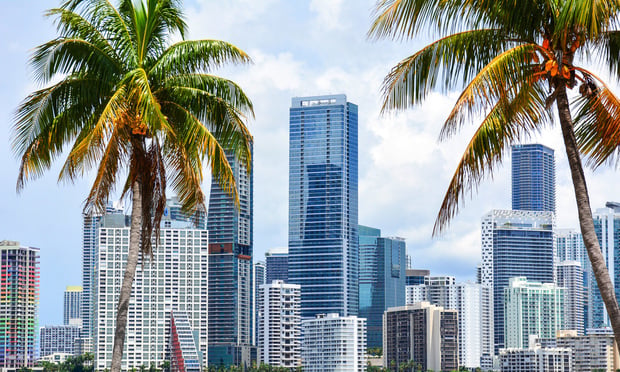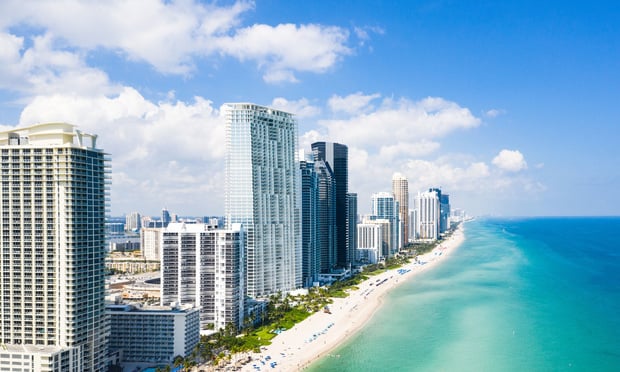
MIAMI—Since hurricanes Irma and Maria devastated Puerto Rico, more than 140,000 residents of the territory have fled to Florida. Indeed, with sizable Puerto Rican communities throughout the state, Florida is uniquely positioned to accept those displaced by the storm. That's boosting demand for housing in Orlando, Miami and Tampa metros, which the Census ranks second, fourth and sixth, respectively for areas with the largest Puerto Rican populations.
Thousands of working-age Puerto Ricans will be arriving at a time when Florida's economy is running at full steam, according to a Cushman & Wakefield report. Most markets with sizeable Puerto Rican communities have unemployment rates around 4%. New arrivals with some skills should easily find work in their immediate areas, especially if they are bilingual.
GlobeSt.com caught up with Hernando Perez, director of multifamily investment sales at Franklin Street's Miami office, explains how the influx impact apartment properties. Stay tuned for part two of this interview, in which he will discuss what this means for class B and C multifamily apartments and more.
GlobeSt.com: The number of Puerto Ricans will likely push past 150,000 in a state that already has over 1 million former residents of the island. What do we know about who's coming to the mainland?
Perez: The new arrivals have brought very little with them. Two destructive hurricanes destroyed or heavily damaged their homes. That crippled an economy whose July unemployment rate was nearly 10%, twice the US average. Thus, there are practical and economic reasons to migrate.
The mix includes families, as nearly 5,700 Puerto Ricans enrolled in Florida public schools after Maria. College students are transferring to state colleges and currently 40 universities throughout Florida are offering free tuition in part because Puerto Rican schools remain closed.
(Here are 10 vital statistics about Florida's population growth.)
GlobeSt.com: What's the impact on housing in Florida?
Perez: Given the limited economic means of the new arrivals, they're seeking B and C class apartment complexes. That's what many Puerto Ricans can afford now given FEMA assistance and immediate employment opportunities.
They have other basic needs such as transportation, furniture and even clothing, so they must stay within tight budgets. They are settling in secondary markets such as Miramar and Kissimmee, which already have significant Puerto Rican populations.
We won't see them in large numbers on South Beach, and their large numbers won't cause the kind of price spikes that luxury condominiums experience. Puerto Ricans will be renters at first, and their tastes will run toward the affordable.
(Find out what's different about multifamily development in this cycle.)

MIAMI—Since hurricanes Irma and Maria devastated Puerto Rico, more than 140,000 residents of the territory have fled to Florida. Indeed, with sizable Puerto Rican communities throughout the state, Florida is uniquely positioned to accept those displaced by the storm. That's boosting demand for housing in Orlando, Miami and Tampa metros, which the Census ranks second, fourth and sixth, respectively for areas with the largest Puerto Rican populations.
Thousands of working-age Puerto Ricans will be arriving at a time when Florida's economy is running at full steam, according to a Cushman & Wakefield report. Most markets with sizeable Puerto Rican communities have unemployment rates around 4%. New arrivals with some skills should easily find work in their immediate areas, especially if they are bilingual.
GlobeSt.com caught up with Hernando Perez, director of multifamily investment sales at Franklin Street's Miami office, explains how the influx impact apartment properties. Stay tuned for part two of this interview, in which he will discuss what this means for class B and C multifamily apartments and more.
GlobeSt.com: The number of Puerto Ricans will likely push past 150,000 in a state that already has over 1 million former residents of the island. What do we know about who's coming to the mainland?
Perez: The new arrivals have brought very little with them. Two destructive hurricanes destroyed or heavily damaged their homes. That crippled an economy whose July unemployment rate was nearly 10%, twice the US average. Thus, there are practical and economic reasons to migrate.
The mix includes families, as nearly 5,700 Puerto Ricans enrolled in Florida public schools after Maria. College students are transferring to state colleges and currently 40 universities throughout Florida are offering free tuition in part because Puerto Rican schools remain closed.
(Here are 10 vital statistics about Florida's population growth.)
GlobeSt.com: What's the impact on housing in Florida?
Perez: Given the limited economic means of the new arrivals, they're seeking B and C class apartment complexes. That's what many Puerto Ricans can afford now given FEMA assistance and immediate employment opportunities.
They have other basic needs such as transportation, furniture and even clothing, so they must stay within tight budgets. They are settling in secondary markets such as Miramar and Kissimmee, which already have significant Puerto Rican populations.
We won't see them in large numbers on South Beach, and their large numbers won't cause the kind of price spikes that luxury condominiums experience. Puerto Ricans will be renters at first, and their tastes will run toward the affordable.
(Find out what's different about multifamily development in this cycle.)
Want to continue reading?
Become a Free ALM Digital Reader.
Once you are an ALM Digital Member, you’ll receive:
- Breaking commercial real estate news and analysis, on-site and via our newsletters and custom alerts
- Educational webcasts, white papers, and ebooks from industry thought leaders
- Critical coverage of the property casualty insurance and financial advisory markets on our other ALM sites, PropertyCasualty360 and ThinkAdvisor
Already have an account? Sign In Now
*May exclude premium content© 2025 ALM Global, LLC, All Rights Reserved. Request academic re-use from www.copyright.com. All other uses, submit a request to [email protected]. For more information visit Asset & Logo Licensing.








